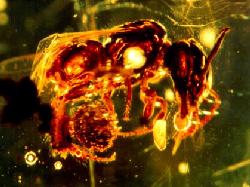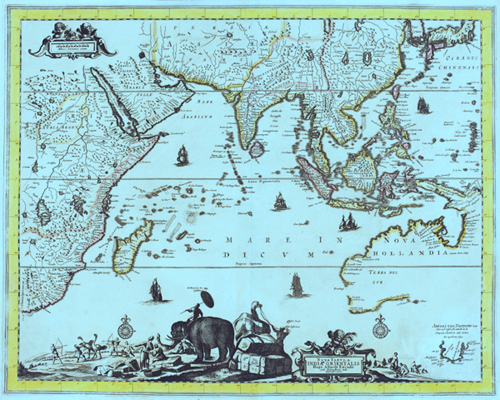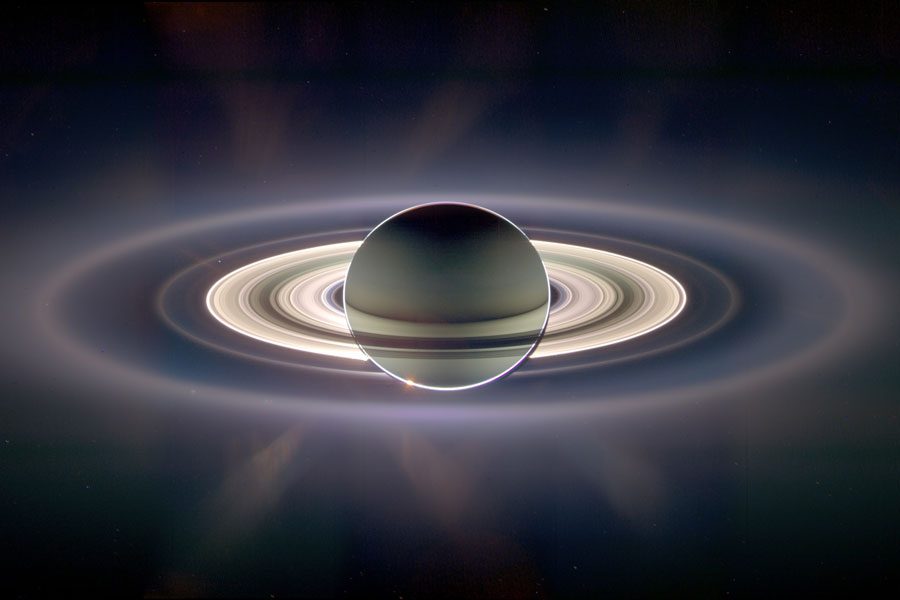Exo Organisms Discovered In Earth's Stratosphere
An Indian exploration of the upper atmosphere has revealed life-forms unlike anything ever seen before. Now the debate on about the implications of three entirely new bacteria, incredibly adapted extremophiles which live in the sky and laugh at lethal ultraviolet rays.
The Indian Space Research Organisation (ISRO) searched the stratosphere with a cryogenically-equipped balloon, taking samples of the stratosphere at heights ranging from twenty to forty thousand meters straight up. These samples, independently analyzed at two separate facilities, have confirmed nine bacterial and fungal strains which are quite normal - and three which definitely aren't.
These single-celled stratospheric citizens display a markedly higher tolerance for ultraviolet radiation than their closest colleagues, which have a tendency to die. And don't mistake how exciting the "alien" idea is - nobody is saying that these three bacteria hovered in from space: they're saying that the incredible UV tolerance supports the idea that maybe ALL bacteria, and everything that came from them (ie everything that moves), might have been seeded across the stars. The evidence is far from conclusive, but the idea is amazing. Previously people thought that the aggressive radiation bath that is space would sterilize any such spaceborne cells - these new examples disagree.
..................................................................................................................................
 Hi, Cousin!
Hi, Cousin!Bacteria: The Space Colonists What'sNEW
On April 20, 1967, the unmanned lunar lander Surveyor 3 landed near Oceanus Procellarum on the surface of the moon. One of the things aboard was a television camera. Two-and-a-half years later, on November 20, 1969, Apollo 12 astronauts Pete Conrad and Alan L. Bean recovered the camera. When NASA scientists examined it back on Earth they were surprised to find specimens of Streptococcus mitis that were still alive. Because of the precautions the astronauts had taken, NASA could be sure that the germs were inside the camera when it was retrieved, so they must have been there before the Surveyor 3 was launched. These bacteria had survived for 31 months in the vacuum of the moon's atmosphere. Perhaps NASA shouldn't have been surprised, because there are other bacteria that thrive under near-vacuum pressure on the earth today. Anyway, we now know that the vacuum of space is not a fatal problem for bacteria. What about the low temperature and the possible lack of liquid water in space? The bacteria that survived on the moon suffered huge monthly temperature swings and the complete lack of water. Freezing and drying, in the presence of the right protectants, are actually two ways normal bacteria can enter a state of suspended animation. And interestingly, if the right protectants aren't supplied originally, the bacteria that die first supply them for the benefit of the surviving ones! English microbiologist John Postgate discusses this fact in The Outer Reaches of Life (2): "When a population of bacteria dries out without a protectant, many of the cells break open and release their internal contents. Among these contents are proteins, gums and sugars, all of which are protective. If the population is sufficiently dense, so that significant amounts of protectant are released, material released from the majority which died first can protect a few of their surviving fellows. Postgate says that bacteria have apparently survived for 4,800 years in the brickwork of Peruvian pyramids, and maybe even 300 million years in coal, using the drying strategy. He also describes bacteria that apparently survived for 11,000 years in the gut of a well-preserved mastodon, although in this case the colony may have continued to live and multiply using nutrients available in the carcass. Postgate gives several other examples of long-surviving bacteria, and he is careful to mention the possibility that some of the bacterial cultures may have been contaminated, so not all of the reports are necessarily reliable. Some bacteria have another even more effective survival strategy: they form spores. Spores are bacterial cells in complete dormancy, with thick protective coats. In terms of our computer analogy, a bacterial spore is like a handheld calculator that has repackaged itself into its original protective shipping carton and turned itself off. "The resistance of some bacterial cells to environmental destruction is impressive. Some bacteria form resistant cells called endospores. The original cell replicates its chromosome, and one copy becomes surrounded by a durable wall. The outer cell disintegrates, but the endospore it contains survives all sorts of trauma, including lack of nutrients and water, extreme heat or cold, and most poisons. Unfortunately, boiling water is not hot enough to kill most endospores in a reasonable length of time.... Endospores may remain dormant for centuries" (3). Postgate concludes his chapter on spores, entitled "Immortality and the Big Sleep," by saying, "There may be much older spores out there, waiting for energetic microbiologists to revive them."
Thirty Million-Year Sleep: Germ Is Declared Alive!There were much older spores waiting to be revived. On May 19, 1995, The New York Times carried a front-page story about them (4). Biologists Raul Cano and Monica Borucki had extracted bacterial spores from bees preserved in amber in Costa Rica. Amber is tree-sap that hardens and persists as a fossil. This amber had entrapped some bees and then hardened between 25 and 40 million years ago. Bacteria living in the bees' digestive tracts had recognized a problem and turned themselves into spores. When placed in a suitable culture, the spores came right back to life. As a control, the two biologists also attempted to culture from the same amber a number of samples that contained no bee parts. These cultures were negative, adding credibility to the experiment. This finding was originally reported in the journal Science (5) to general acceptance.
Postgate, upon learning of this discovery, wrote an article for The Times of London that concluded as follows (6): "... could life on this planet be descended from alien spores? ...Panspermia, the view that the seed of life is diffused throughout the universe, has been favored by a minority of thinkers since the Greek Anaxagoras in the 5th century BC. He, Arrhenius and Fred Hoyle may yet have the laugh on us doubters." ConclusionWhen the first bacteria colonized the earth, almost four billion years ago, it was by our standards a hostile place. There was no free oxygen to breathe and no ozone to block out the sun's damaging ultraviolet radiation. Nuclear radiation came from decaying U235, which was about fifty times more abundant then than now (7). The air was hot and full of noxious chemicals such as sulphurous gases released by volcanoes. Not for nothing is it called the Hadean Eon. However, there are bacteria which can live, even thrive, in a very wide variety of conditions that seem unfriendly to us (8)."Life manages very well without oxygen, evolving into flourishing communities of anaerobes. Acidity... presents no problem, as sulphur bacteria and their co-habitants illustrate, nor does a considerable degree of alkalinity bother alkophiles.... Water purity is a trivial matter: saturated salt brines support abundant bacterial life. And pressure is quite irrelevant, with bacteria growing happily in a near vacuum or at the huge hydrostatic pressure of deep ocean trenches. Temperature, too, presents little problem: boiling hot springs support bacterial life, and bacteria have been found growing at 112 C in superheated geothermal water under hydrostatic pressure; conversely, other types of bacteria thrive at well below zero, provided the water is salty enough not to freeze. And even if they do get frozen, many bacteria revive when their habitat thaws. Even organic food is not a prerequisite...." There are bacteria that metabolize iron, nitrogen, sulphur, and other inorganic materials. There are bacteria today that can live without sunlight. Archaebacteria that can withstand extreme heat have been found thriving in oil reservoirs a mile underground(9). Some species of cyanobacteria are highly resistant to ultraviolet radiation. The only thing absolutely essential for bacteria to live, grow, and multiply is liquid water. We are confident that the early Earth had plenty of water. Scientists believe that concentration of water in the earliest atmosphere for which they have data, over four billion years ago, was far higher than it is today. Bacteria have the ability to colonize an unfriendly planet like the Hadean Earth. Not just had the ability but have the ability. These are not make believe stories. All of the bacteria we have considered, with all of their unusual abilities to survive extreme environments, are alive today! |











+copy.jpg)






















































.jpg)



























 G
G







.jpg)
















No comments:
Post a Comment